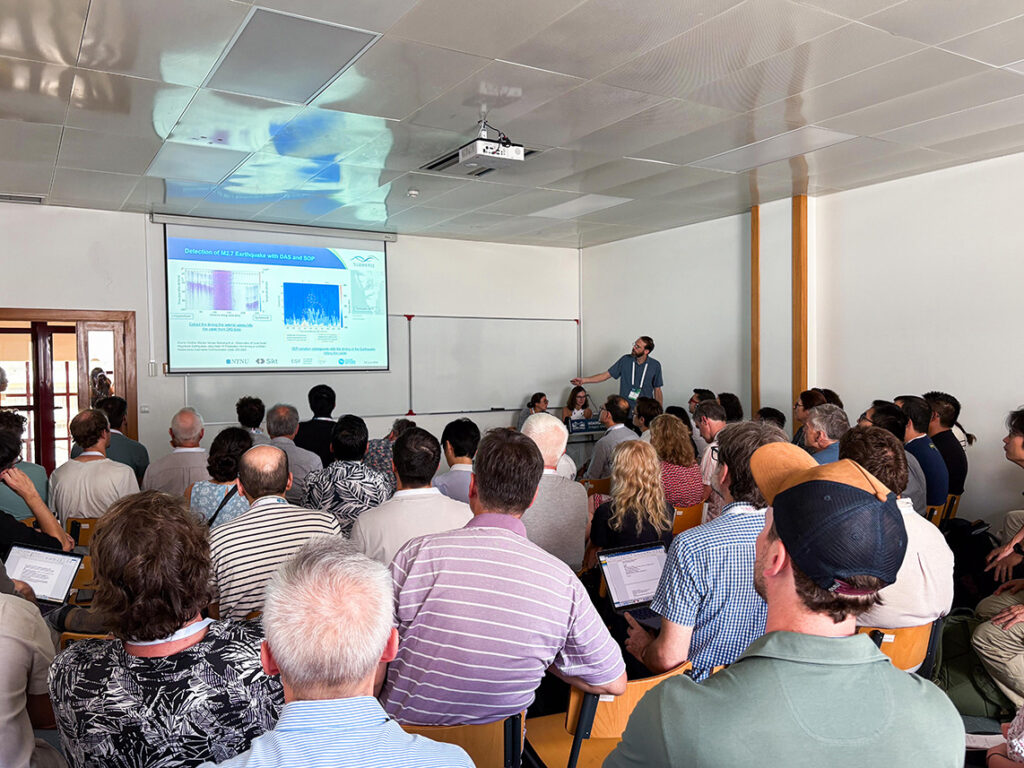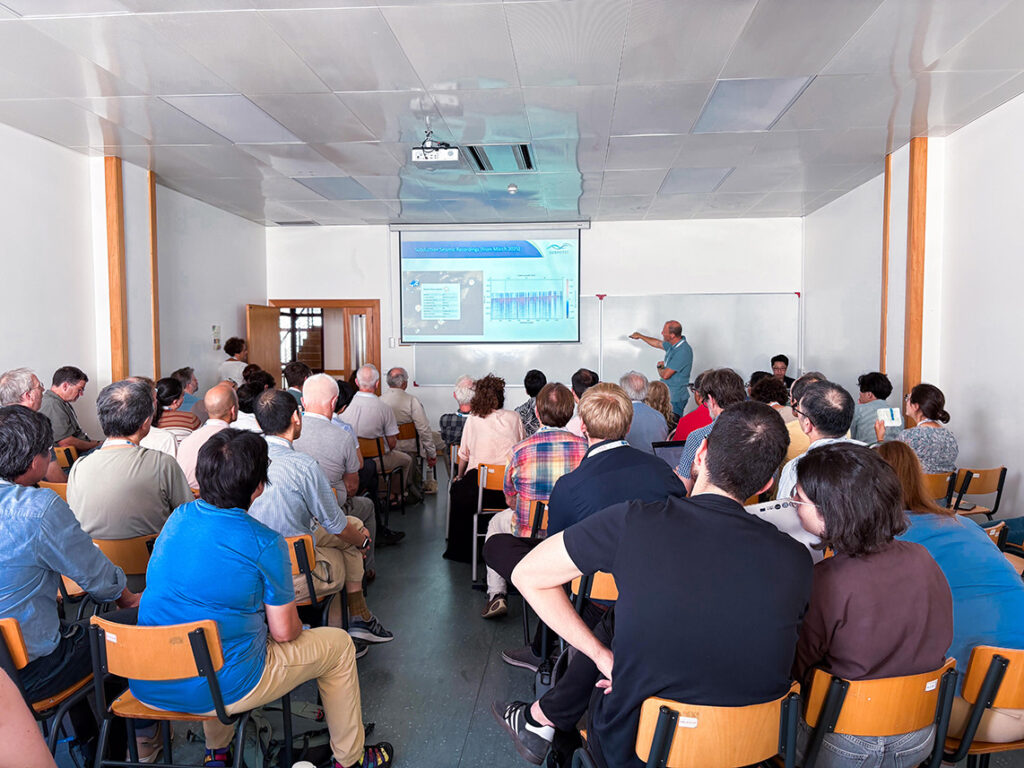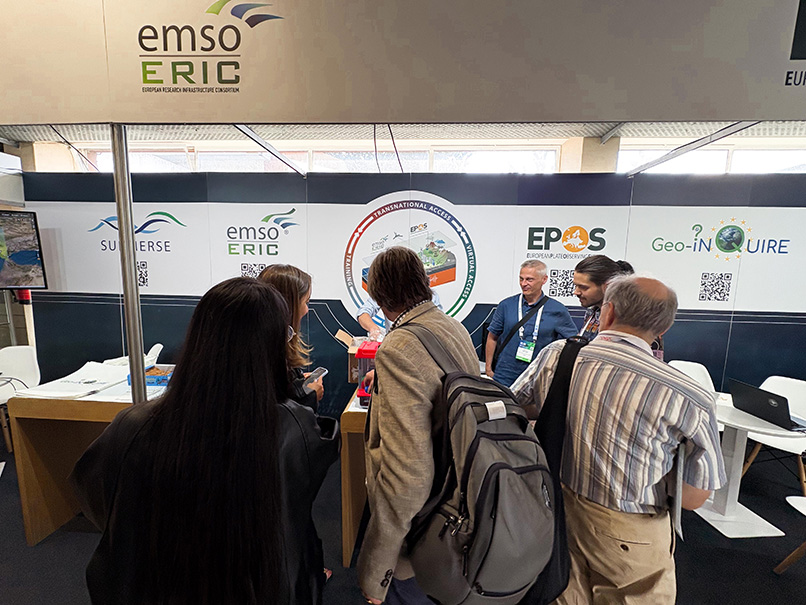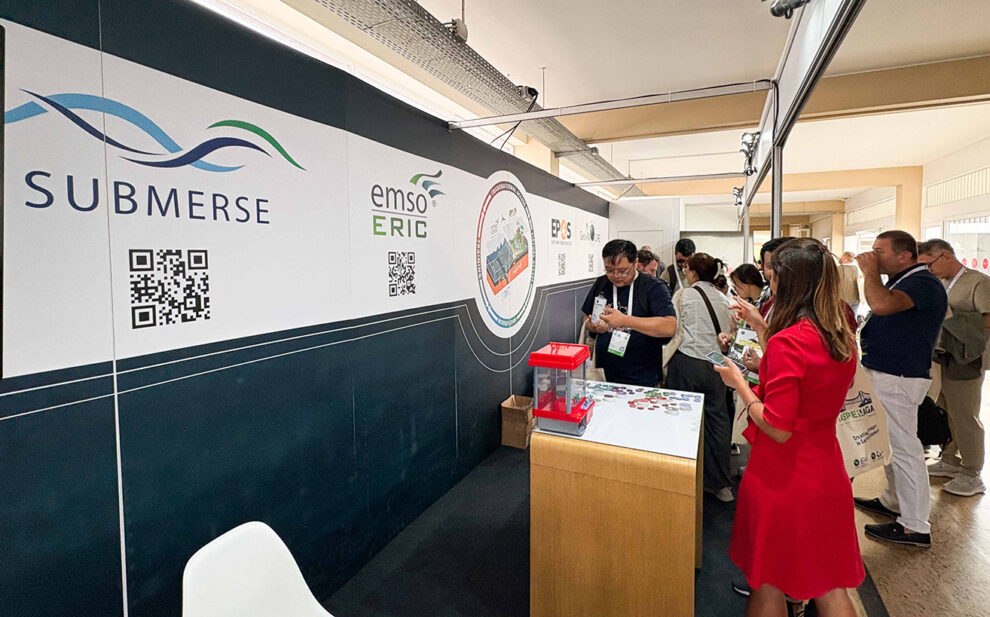The IAGA–IASPEI Joint Scientific Meeting 2025, hosted at ISEL in Lisbon, gathered leading researchers from around the world to exchange knowledge and present the latest advances in geophysics and Earth sciences.
For SUBMERSE (SUBMarinE cables for ReSearch and Exploration), it was a milestone opportunity to show how submarine fibre optic cables—already the backbone of global communications—can be transformed into planetary-scale sensors for seismology, oceanography, and marine biology.
Through training courses, six scientific presentations, and a joint booth with partner initiatives Geo-INQUIRE, EMSO ERIC, and EPOS, our team highlighted the growing role of fibre sensing in Earth sciences and how SUBMERSE is advancing this field across Europe.
Training the next generation of scientists on DAS and SOP
Ahead of the main conference, SUBMERSE experts supported the IASPEI Early Career School, providing hands-on training in working with fibre sensing data.
In the DAS workshop, Javier Quinteros (GFZ) and Afonso Loureiro (ARDITI/IDL) guided participants through setting up Rayleigh-based Distributed Acoustic Sensing experiments, covering the principles and strengths of DAS and addressing the challenges of managing the large datasets it generates.
Watch the video: Afonso Loureiro shares his insights from the DAS training
During the SoP workshop, Rudolf Vohnout and Martin Šlapák (CESNET) introduced State of Polarisation analysis, demonstrating how changes in light polarisation along fibres can reveal seismic signals. Using interactive Jupyter notebooks, participants explored practical workflows in Python.
Watch the video: Rudolf Vohnout shares his insights from the SOP training
A highlight of the training was showing correlations between DAS and SoP measurements, illustrating how combining independent techniques can provide richer insights into Earth processes.
Showcasing SUBMERSE research

During the conference, SUBMERSE researchers delivered six presentations spanning multiple applications of fibre sensing. Frederik Tilmann (GFZ) discussed how the SUBMERSE consortium is paving the way for continuous fibre-optic monitoring using submarine telecommunications cables, demonstrating the value and achievements of the project two years in. Han Xiao (GFZ) introduced DeepDAS, a neural network trained on 92 million submarine DAS records, highlighting how machine learning can enhance rapid earthquake detection.
Christos Evangelidis (NOA) presented results from DAS monitoring of the Ionian and Aegean Seas, supporting earthquake detection in one of Europe’s most seismically active regions.
From the Atlantic, David Schlaphorst (IDL, University of Lisbon) showcased how DAS strain data captures tides, currents, and waves, with measurements matching buoy data one-to-one—demonstrating fibres’ potential as ocean observatories. Afonso Loureiro (ARDITI/IDL) highlighted how DAS on the GeoLab fibre off Madeira reveals mesoscale oceanographic processes, expanding the scope of fibre sensing beyond earthquakes.

Collectively, these contributions emphasized how SUBMERSE is building both the technical foundation and scientific use cases for fibre sensing across multiple European sites.
Building fibre sensing ecosystem
 At Booth 1, SUBMERSE partnered with Geo-INQUIRE, EMSO ERIC, and EPOS to create a hub for discussion, collaboration, and outreach. Visitors had the opportunity to learn about fibre sensing technologies and data produced directly from project members, explore practical demonstrations, and discuss potential applications.
At Booth 1, SUBMERSE partnered with Geo-INQUIRE, EMSO ERIC, and EPOS to create a hub for discussion, collaboration, and outreach. Visitors had the opportunity to learn about fibre sensing technologies and data produced directly from project members, explore practical demonstrations, and discuss potential applications.
The booth also hosted a special coffee-break talk delivered by Afonso Loureiro, focusing on the challenges and potential of fibre-optic seafloor sensors. The session drew strong interest and fostered conversations about integrating fibre sensing into scientific workflows.
Why this matters for scientific communities
SUBMERSE’s presence at IAGA–IASPEI 2025 meeting showcased how fibre sensing is becoming a critical tool for seismology. SUBMERSE demonstrates that submarine cables can serve as distributed observatories, providing high-resolution insights into seismic activity and ocean processes that were previously difficult to monitor.
As the project enters its final year, sharing results, building collaborations, and training researchers will be key to ensuring that fibre sensing becomes an integral part of the global scientific ecosystem.


